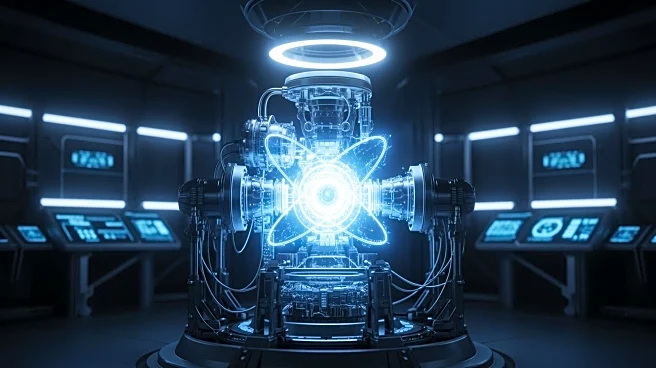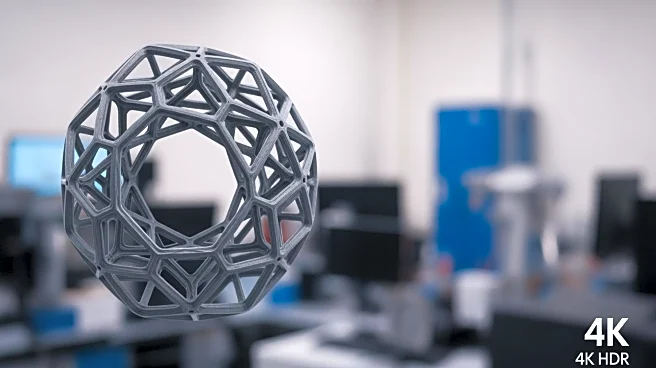What's Happening?
Researchers have developed the world's hottest and smallest engine, achieving temperatures of 10 million Kelvins, significantly hotter than the Sun's corona. This microscopic engine, described in a forthcoming
paper for Physical Review Letters, is housed within a microparticle trapped in a near-vacuum setup known as a Paul trap. The engine's operation involves applying a noisy voltage to electrodes, causing the particle to jiggle and the system's temperature to rise exponentially. The engine exhibits unusual thermodynamic behaviors, sometimes producing more power than the energy it consumes, and occasionally cooling under conditions that should increase its temperature. These phenomena are attributed to the unique rules of microscopic physics, which differ from macroscopic expectations.
Why It's Important?
The development of this microscopic engine has significant implications for the field of physics, particularly in understanding thermodynamics at a microscopic level. The engine's ability to defy conventional thermodynamic laws could lead to advancements in designing more efficient engines and conducting experiments that challenge current scientific understanding. While the engine is unlikely to be used in everyday applications like cars or household appliances, it offers potential for theoretical applications, such as simulating microscopic phenomena like protein folding. This could enhance our understanding of biological processes and improve computational models, impacting fields such as biochemistry and molecular biology.
What's Next?
Future research will likely focus on exploring the theoretical applications of this engine, particularly in simulating microscopic phenomena. Researchers may also investigate the engine's unique thermodynamic behaviors to gain deeper insights into the fundamental principles of physics. This could lead to the development of new technologies or methodologies in scientific research, potentially influencing various scientific disciplines. The study's findings may also prompt further exploration into the applications of microscopic engines in other areas, such as nanotechnology and materials science.
Beyond the Headlines
The creation of this engine highlights the potential for microscopic tools to solve complex scientific mysteries. By understanding the unique behaviors of microscopic systems, researchers can develop new approaches to studying and manipulating matter at the smallest scales. This could lead to breakthroughs in various fields, including medicine, where understanding protein folding and other molecular processes is crucial. The engine's development also underscores the importance of interdisciplinary research, combining physics, engineering, and biology to push the boundaries of scientific knowledge.











